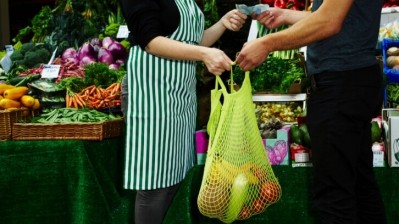Futureproofing The Food System
Food as medicine movement can boost economic, environmental health as well as patient well-being
During the panel ‘Resetting the table to ensure equitable access to nourishing and sustainable food’ stakeholders from across the value chain shared how nutrition insecurity disproportionately impacts select communities and how strategically producing, sourcing and distributing food as medicine can tackle some of the structural challenges related to inequitable access to nutrition, health care and wealth-building.
“The scale of the impact of poor nutrition on health is something that affects every American household today, and what we eat is not the No. 1 driver of poor health outcomes and death around the world, including in the United States,” where 140 million Americans are obese and diabetes rates have tripled in the last 30 years, Devon Klatell, vice president, food initiative at The Rockefeller Foundation, told attendees.
But, she added, “the negative impacts of poor diet are not equally shared. A number of groups in this country are disproportionately impacted, and that includes Black Americans, Hispanic, Native populations, Pacific Islanders, but also rural communities, veterans, communities that are low income and suffer particularly from food insecurity.”
The discrepancies in impact boils down in part to “affordability for a variety of structural reasons, [with] healthy food often [costing] more than ultra processed foods,” explained Kevin Volpp, director, Penn Center for Health Incentives and Behavioral Economics.
“For a lot of people, even if they might want to eat more healthy food, they can’t afford it. And part of what we need to figure out is how to build evidence on what’s effective and what’s cost effective, because ultimately, we are going to pay for this either upfront or down the road in the form of higher medical costs,” he said.
Improving equity with food as medicine
As Steven Chen, the chief medical officer at Alameda County Recipe4Health in California explained during the panel discussion, food as medicine programs can address the innate inequity in nutrition insecurity as well as its health ramifications for people and the planet by intentionally sourcing food that is more sustainable from farmers and agricultural stakeholders who have traditionally been shut out of the system.
“We have the opportunity for food as medicine to make a health equity approach that actually is available to all, many of our technological and medical interventions, sin can sometimes create more disparities. When we ask this question of where the food comes from, and how is it grown, we are actually then asking the question of connecting healthcare, to agriculture in the supply chain and in between. And when you do that, and if you prioritize agriculture in a way that is good for the planet, from an organic and regenerative platform, as well as with farmers who have been shut out of the system, and the supply chain that have been shut out of the system with an equity center, you can get incredible multipliers for health, that lead to health equity and those multipliers, other things that we see in the exam room, human health, improving higher nutrient density, quality food through regenerative and organic food,” he said.
He added the win isn’t just in medicine, “it is actually for the economic health, environment and wealth building that can happen when you localize food systems in the sourcing of the food locally.”
He explained, “We spend 4.1 trillion per year on treating disease chronic conditions and whatnot. 3.7 trillion of that, or 90% of that is on chronic conditions. That's what we deal with in primary care. Imagine taking a slice of that healthcare dollar, and investing that into the food and agricultural system that can power our food transformation …if we ask that right question: Where does the food come from?”
By investing in food as medicine as a proactive health benefit and redirecting savings from health care to support regenerative and organic farming, greenhouse gas emissions from agriculture and food could be reduced – benefiting the planet’s health, he said.
Further, he argued, if the food for food as medicine programs is sourced from BIPOC suppliers “we are creating equity, and … economic health and then we’re getting a higher quality food to our patients who are in our federally qualified health centers.”
Sarah Fleisch, senior director, policy research and development at Instacart also shared how the grocery delivery service is tackling inequity through food as medicine by boosting access through delivery, and expanding payment options to include financial support from the government and insurance programs that help cover grocery bills. Through Instacart Health, the company also is able to make the healthy choice the easy choice, facilitate food as medicine programs and help consumers further stretch and manage their budgets.
To learn how else the food as medicine movement can help address inequity, check out on demand the full discussion from the panel ‘Resetting the table to ensure equitable access to nourishing and sustainable food’ that was part of FoodNavigator-USA’s Futureproofing The Food System. Registration is free and easy.

















